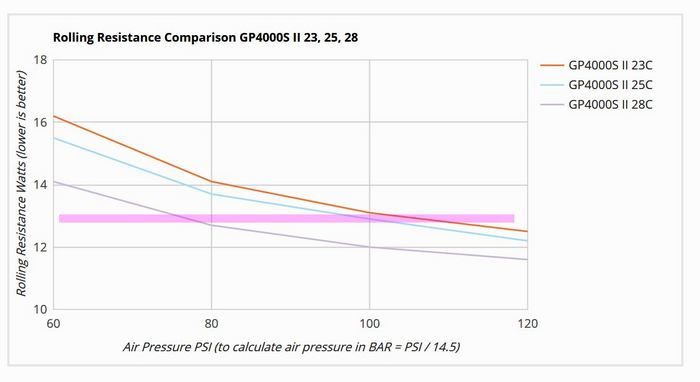Originally Posted by
rm -rf
Yes, I agree with all your points.
The bicyclerollingresistance chart for the GP4000S tests. I added the purple horizontal line. The 28 has the same rolling resistance at 77 psi as the 25 at 100 psi, and the 23 at 106 psi. (And those are the rear tire pressures I've used on these three sizes. Front tires at 15% less pressure.)
 Other energy losses
Other energy losses
Jan Heine promotes large tires, 38mm, 44mm, etc. Part of his argument is that they save rider energy that goes into jiggling and bouncing the rider+bike. I think it's likely to be significant on rough surfaces. The rider's energy loss doesn't get tested with the bike lab rollers.
I ride smooth tread 38mm sometimes, and they are fantastic on rough chipseal and broken pavement. The handling seems a little more stable / sedate / controlled than the same bike with 28mm. And the tires are heavier, 200 grams more for each tire. But they don't feel slow at the cruising speeds I use when riding these -- any aero penalty is very low, and they aren't slow at all due to rolling resistance on smooth roads.
For reasonable pavement, I'll usually want the 28s. But the 38s are fun, I can ride over just about anything.
When I actually plotted ideal air pressure vs tire size and applied it to that graph, it wasn't a horizontal line but sloped a little bit to where 28s had more rolling resistance than 23s.
It is also important to remember that the real difference between tire sizes when it comes to performance isn't width, but volume. The difference between a 28 and 25 in volume is much greater than volume difference between 23s and 25s.